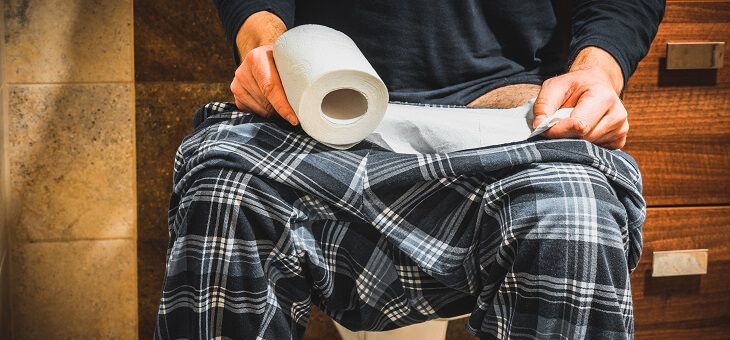Parents of a certain age used cloth nappies and would well remember the buckets of soaking solutions and nasty chemicals that were poured down the drain or maybe into the toilet. Were they a better option than disposables that go into the bin and then into landfill?
I raise the nappy debate because there is a growing move to use cloth or other forms of washable toilet paper instead of your garden variety supermarket rolls.
Amber, a mother of three, estimates she has saved between $1400 and $2600 over three years by using cloth wipes. The family still buy toilet paper, but only for guests.
“One day it occurred to me, why are we using toilet paper? We are literally throwing our money down the toilet,” she said.
Read: The garbage we’re flushing down the toilet
“I just couldn’t wrap my head around why we were doing that.”
She found cloth products online but decided to make her own.
The family keep a bucket in the bathroom with water in it “to keep things nice and liquidy” and wash used cloths every day – separately from their regular wash.
She said her husband once made the mistake of putting the cloths in with regular washing.
“There’s no coming back from washing your soiled cloth with clothing or bedding without soaking everything in the bathtub with baking soda,” she said.
So given reusable toilet cloths or paper need to be washed, do they live up to the claims that they are good for the planet? And what about hygiene issues?
Read: Fatbergs in sewers
Logic and research indicate that most people would put the soiled cloths in a plastic-lined container or one with a solution of vinegar, peroxide or antibacterial chemicals.
When handling the items, you would need to wear gloves and know how to remove the gloves without contaminating your skin.
The main bacteria to worry about is E. coli, which can cause serious stomach upsets and is only killed by very hot water and bleach. The US Centers for Disease Control and Prevention (CDC) says you need to use a hot-water cycle that is at least 71°C for at least 25 minutes – or a sanitising setting if you have one. Obviously, you could contaminate your washing machine if you don’t use water that’s hot enough.
Read: Friday Funnies – toilet humour
Healthline.com evaluates the pros and cons of reusable toilet paper.
Pros
- The cloths are reusable so you’re unlikely to run out.
- You can produce them from materials you probably have about the home.
- Depending on the material you use, the cloths can be gentler on the skin.
- They can reduce pollution from paper production.
Cons
- Reusable toilet paper could clog the toilet if you accidentally drop it in.
- It requires careful handling and laundering to avoid illness.
- It may not be environmentally friendly due to water, chemical and heating requirements.
Cleaning experts warn that you need to read bleach product labels and avoid mixing chlorine bleach with other cleaners, such as ammonia, ammonia-based products or other products that have high acid levels, such as vinegar. “Mixing these cleaners can lead to dangerous, toxic chemical interactions,” they say.
Sites such as Etsy and Amazon sell reusable toilet paper, though the products are not cheap.
But … toilet paper is largely biodegradable. Sewerage and septic systems (and the bacteria that feed off them) usually make quick work of the paper. And toilet paper is no longer on the ‘endangered list’ as it was during the early days of the pandemic. Would you really bother?
If you enjoy our content, don’t keep it to yourself. Share our free eNews with your friends and encourage them to sign up.

